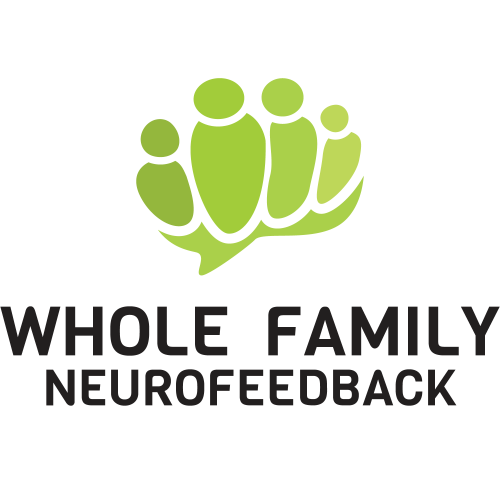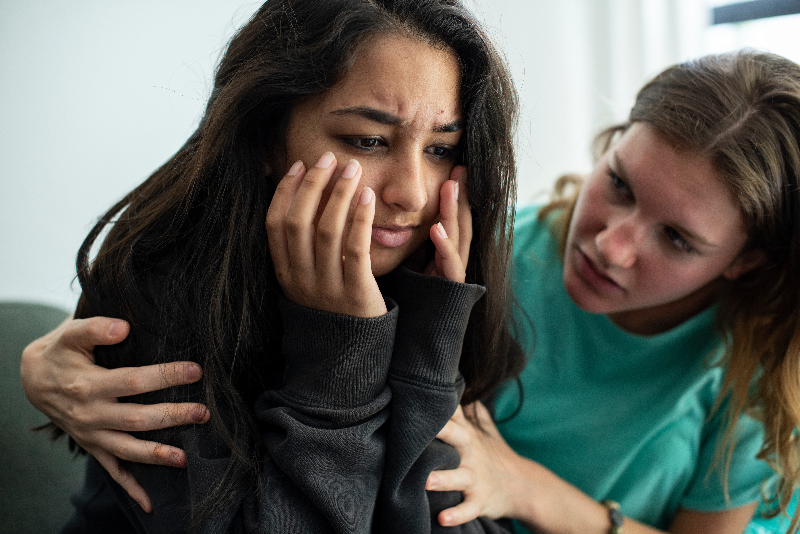The Silent Struggle: Post-Pandemic Anxiety In Kids (And How To Help)
Since the pandemic, there’s been a dramatic increase in anxiety disorders among children, adolescents, and young adults. Before the pandemic, rates of anxiety were increasing dramatically. The pandemic simply added fuel to the already raging fire. In the first 10 months of the pandemic, there was a 151% increase in mental health concerns just in kids ages 10-14.1
A study from Cornell indicates professionals saw a two-fold increase in depression and anxiety after the pandemic.2
Some psychologists suggest a theory of long anxiety, similar to long COVID – an anxiety that has never really left. If your family is experiencing post-pandemic anxiety, you know exactly what they mean by this.
So many people are experiencing this but not many are talking about it. If your family is going through post-pandemic anxiety, you’re not alone.
This week’s blog talks all about post-pandemic anxiety in kids, how to recognize it, and how neurofeedback can help train the brain toward resilience and flexibility.
Common Causes of Post-Pandemic Anxiety
There are many different reasons people have anxiety. Environmental factors play a part and sometimes, genetics does too. During the COVID-19 pandemic, more unique factors contributed to anxiety as we changed the way we lived our everyday lives.
The causes of post-pandemic anxiety in kids can be linked back to changes that occurred during the pandemic.
Social isolation
In the spring of 2020, people were very isolated. For many adults work stopped or went remote. For kids, schools changed dramatically. For many kids, school stopped abruptly and when it restarted it was to online learning. As you probably know, the switch to online learning wasn’t easy for many kids.
Not being able to see friends or extended family had a profound effect on many kids. Kids suffered academically because many kids didn’t get the in-person, one-on-one attention they needed.
For many kids, social isolation lasted a very long time. Friendships changed and when kids went back to school many didn’t have a connection to the friends they once had or that had a more difficult time socializing.
Changes in routine
With social isolation and online learning, kids inevitably changed their whole routine. Suddenly everything was at home. Humans thrive in routine – especially kids. When routines were dismantled it had a snowball effect and kids (and parents) were affected. When one person in the family is stressed, it trickles down and affects everyone.
Fear of illness
Many health-related anxieties were created during the pandemic. For many, this still remains today. While staying diligent about handwashing and good hygiene is important, overemphasis and worry about health can cause anxiety that interferes with your everyday life. Health-related anxiety continues until this very day.
Academics
Kids lost time at school during the pandemic. Remote learning held many back from learning to their fullest potential. Learning loss itself contributes to anxiety but the pressure to catch up also creates excessive anxiety, worry, and mood changes.
All of these factors combined easily created a pressure cooker for excessive worry (and even panic). For many kids, the anxiety didn’t go away when the pandemic was over. Many kids and parents continue to deal with the consequences today.
Sometimes it can be hard to tell if your child is experiencing anxiety. Kids don’t always have the capacity to tell you what they are feeling. If your child seems different or you’re just not sure if they’re experiencing post-pandemic anxiety, here are a few warning signs.
Signs of Anxiety
Anxiety looks different in every child. Since many kids have a hard time expressing themselves, it can be hard to identify it. Anxiety symptoms can manifest in different ways. We tend to think of anxiety as purely emotional but symptoms can range from physical symptoms to behavioral and even social and emotional.
Here are some common signs of anxiety in kids.
- Frequent headaches and stomach aches
- Difficulty sleeping and excessive fatigue
- Withdrawing from social activities
- Anger and irritability
- Excessive worry, fear, negative thoughts, and feeling tense
These can be signs of anxiety or they can be signs of something else going on. If you’re unsure, reach out to your child’s healthcare provider, a licensed therapist or a trusted person at their school. Post-pandemic anxiety and mood disorders are so common that many schools are increasing resources for mental health counseling to help kids.
I am also happy to consult with you. As a family therapist for the last 26 years, and as a mom, I can help you assess what might be going on and who to contact for help.
An Anxious Generation
Post-pandemic anxiety can be exacerbated by modern society. Society isn’t what it used to be and parents have adjusted the way they parent because of it. This puts younger generations at greater risk for anxiety. In the book, The Anxious Generation by Jonathan Haidt, he discusses how our changing society can contribute to anxiety and even rewire the brain.3
Kids play less
Kids don’t play with other kids as much as they used to and there is less unsupervised outdoor play. For most people, gone are the days your kids leave the house and explore the town on their bikes for 8 hours a day.
Decreasing play with kids causes kids to have fewer developmental experiences they need for their growing brains.
Decreasing play can have negative effects on kids such as:
- Not getting the benefits of socializing with kids their age
- Not getting real-world, problem-solving experiences
- Decreased creativity
- Difficulty with emotional regulation
- Less-developed executive function skills
Increased access to screens and social media
With less play, kids are turning to screens and social media. Excessive screen time can contribute to sleep problems and attention issues. Social media can cause kids to get into the comparison trap with one another. Social media can also be a place where kids experience bullying which can contribute to mental health concerns.
Post-pandemic anxiety along with societal changes can lead to high rates of anxiety. Let’s talk about how neurofeedback can help.
How Neurofeedback Can Help
Neurofeedback is a brain training program that can help kids feel “unstuck.” When kids are dealing with anxiety, they’re often stuck in a negative cycle of excessive worry and negative thinking.
Neurofeedback can help disrupt negative thought patterns and promote relaxation and healthy sleep habits. NeurOptimal® neurofeedback is an at-home neurofeedback and brain training program that anyone can do.
It works by monitoring your brain’s electrical patterns while you’re listening to music or watching a movie. When needed, you’ll hear a brief pause in what you’re listening to. This pause is the “feedback” your brain needs to bring you back to the present moment.
This process allows the brain to tap into its natural instinct toward resilience and flexibility.
NeurOptimal® is designated by the FDA as a general wellness product and can help kids:
- Manage stress better
- Promote healthy sleep habits
- Enhance mental acuity and focus at home and school
- Enhance learning capacity
- Become flexible and resilient – which makes what they’re dealing with easier
Neurofeedback trains the brain to work at its most optimal state, increasing your brain’s ability to adapt and change.
NeurOptimal® neurofeedback is great for kids because it’s:
- Safe
- Effective
- Non-invasive
- Convenient – it can be done at home
- Effortless: The brain trains while they’re listening to music or watching a movie
Learn More About Neurofeedback
If you’re interested in learning more about how neurofeedback can help you and your family, join our Facebook group, Neurofeedback Moms. (Dads are welcome too!)
We have a great community of parents learning about neurofeedback and sharing their personal experiences.
In the group you’ll get:
- Research-based information to help you make the best decisions for your family
- Live support from experts in parenting, neurofeedback, nutrition, therapy, and neuroscience
- Hear from other parents about their neurofeedback experience
- Lifetime access to all live recordings – watch at your convenience!
- Support when you need it!
If you want to know how neurofeedback can help your family, join Neurofeedback Moms.
I can’t wait to connect with you in the group!
Resources
- The Impact of COVID-19 on Anxiety Disorders in Youth
- Weill-Cornell Medicine: What To Know About Youth Anxiety
- The Anxious Generation Website
Disclaimer: This site contains information on general health and wellness topics. Please note that NeurOptimal® has been designated a general wellness product by the FDA. The information on this site or in any linked materials should not be construed as medical advice. The information in this article is not intended to replace any recommendations by your healthcare provider.

